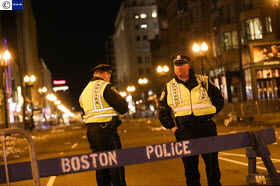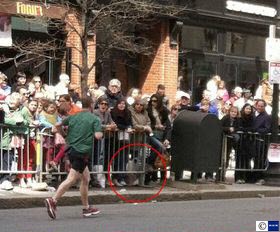Boston Marathon Bombings: Security Lessons We Learned
The Boston Marathon bombings are a stark reminder that we live in a post-9/11 world, and how events like this will continue to happen in the United States of America. While shocking, we've been extremely fortunate that nothing major has occurred since that tragic day in New York City.

Home grown terrorists and radicalization will continue to rear its ugly head as we move forward, coupled with the international threat we face every day. This was a classic case of individuals welcomed into the United States, who became radicalized and took their beliefs and frustration out on the many innocent people in Boston Massachusetts that bright sunny day.
The following is part one of a two-part series on the three security lessons we learned from the horrific incident that occurred only a month ago:
Security is Everyone’s Responsibility
We are extremely fortunate to have some of the best intelligence and law enforcement professionals in the world protecting us on a daily basis. An event of this magnitude, covering 26.2 miles of unprotected area, showed how vulnerable we can be even with all of our experts at our side.
The questioning and finger-pointing has begun, but the reality is protecting 26.2 miles is virtually impossible.
In my opinion, law enforcement and many other professional groups have done an amazing job protecting this international event for over 100 years. It is quite easy to second-guess what could've worked or may have worked, but the reality is that unless we check every individual along the marathon route, it's virtually impossible to protect it.
When someone has the desire to do something as terrible as this, it's almost impossible to stop them. When they have the desire to search out and find a means to hurt individuals, they are usually successful.
Relating this to a security perspective, we are trained on how to harden targets, while protecting the people and assets inside. The traditional security model is based on layers, securing each individual layer based on its criticality, as well as, the overall program.
When you think about the marathon, the amount of layers covering 26.2 miles that have NEVER been locked down with few exceptions (VIP and some media locations) make this a challenge of immeasurable proportion.
And what most of the public doesn’t know, is that the 2013 Boston Marathon had planned and deployed the most safety and security personnel for any event in its history.
While shocking to some, this demonstrates the difficulty protecting any event of this magnitude. Most individuals attending marathon events are walking around, carrying a variety of backpacks, coolers and other devices to enjoy their day.
That means that each and every person attending could be considered a suspect.

Post the bombings, the success and quick actions of local, state and federal law enforcement utilizing the many different types of video available was astonishing to me. The investigation started with simple cell phones videos, still cameras shots and CCTV from a variety of sources and agencies encompassing both public and private entities.
These video resources provided the key ingredients to determine who the main suspects were and the ultimate decision by the FBI to release the photos and ask for the public’s assistance. Within hours of the photo's release, the suspects could no longer hide and their identities known.
As a young Security Officer 27 years ago, I was trained by some of the best in the business. I was pushed to look and listen, while taking that information in so I could apply critical thinking to my decision making on how to deal with the situation at hand.
I remember hearing this phrase many times over: Security is everyone's responsibility.
Is that not what we are talking about today? How can we honestly sit back and believe that our military, government, state or local authorities can keep us safe all the time? We are ALL in this together and need to take a hard look at what we can do to be part of the solution long term.
**Stayed tuned next Tuesday, May 28, 2013 for part two of this two-part series.
 Written by
Written by